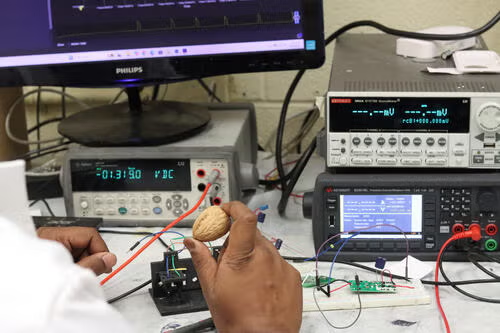
The coin-sized device known as a water-induced electric generator (WEG) produces electrical energy as water evaporates from a complex network of pores that make up the shell structure
Researchers at the University of Waterloo have developed an inexpensive device that generates enough electricity to power a calculator using only waste walnut shells and drops of water.
The coin-sized device known as a water-induced electric generator (WEG) produces electrical energy as water evaporates from a complex network of pores that make up the shell structure.
“It all happens with nothing more than a single droplet of water and the shell’s natural architecture, no crushing, soaking or complex processing needed,” said Nazmul Hossain, a Waterloo PhD student in mechanical and mechatronics engineering. “It’s a simple, yet powerful example of turning waste into clean energy using nature’s own power.”
At the heart of the technology, a form of hydrovoltaic energy harvesting, is how evaporating water flows through the porous structure of nut shells. As the water moves, it transports electrically charged ions, which interact with the surface of the shells to create a charge imbalance that generates electricity.
Hossain was inspired to develop the device after he ate a hazelnut and examined its shell under an electron microscope. The complex structure he observed, part of the nut’s internal system to transport water and nutrients for growth, struck him as ideal for energy harvesting.
Testing with four kinds of nuts showed walnuts have the greatest potential to produce power. Researchers then optimised walnut shells for that purpose by cleaning, treating, polishing and cutting them into precise shapes.